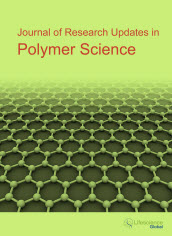jrups
Abstract : Effect of Hydroxyl-Terminated Random Copolyether (PET) and Hydroxyl-Terminated Polybutadiene (HTPB) on Thermal Decomposition Characteristics of Ammonium Perchlorate
|
|
Abstract: The effects of two binders (PET and HTPB) on thermal decomposition characteristics of Ammonium Perchlorate were studied by TG-FTIR, DSC and SEM. When Hydroxyl-terminated polybutadiene (HTPB) mixes with AP, there is no obvious mutual effect in the process of heating, but it happen in the other way when Hydroxyl-terminated random copolyether (PET) mixes with AP. During the heating process of PET-AP mixture, the decomposition of PET occur in advance significantly, so that the porous structure of AP at the low-temperature decomposition stage becomes more significant, the total amount of heat released increases significantly, and the weight-loss ratio of AP about the two stages increases to about 2:1. During the thermal decomposition, the heat release and N2O gas production of PET-AP mixture is milder than the HTPB-AP, which is more conducive to the insensitive properties of propellant. Keywords: Insensitive propellant, TGA-FTIR, Thermal Decomposition characteristics, porous structure, N2O.Download Full Article |
Abstract : Mechanical and Rheological Properties of Polyurethane Elastomers from Hydroxy-Terminated Polybutadiene and Isophorone Diisocyanate Used as Liners for Composite Propellants
|
|
Abstract: In this contribution, we studied mechanical and rheological properties of liners based onhydroxy terminated polybutadiene (HTPB) loaded with titanium dioxide and cured with isophorone diisocyanate (IPDI) or toluene diisocyanate (TDI). A thixotropic agent (Thixin R) was added, and viscosity was measured as a function of curing time, leading to much lower viscosities and longer pot life values. Mechanical properties (tensile strength and elongation at break) were not significantly affected but viscosity was reduced at all tested concentrations. Loss modulus (G'') and storage modulus (G') were measured during cure time at three different temperatures (7, 25 and 60°C) with IPDI, and at 7 and 25°C for TDI. Both curves did not intersect during the cure period studied (120 minutes) for IPDI but did so for TDI at 25°C with the formulation having a thixotropic additive. These results suggested that liner formulations will flow if sprayed onto the inner surface of the rocket case before propellant is casted. Keywords: Liner, rheology, applicability, case-bonded, solid rocket motor.Download Full Article |
Abstract : A Simple and Efficient Approach to Cellulose/Silica Composite Aerogel with High Silica Utilization Efficiency
|
|
Abstract: Cellulose aerogel is a fascinating material with high porosity, low density and biocompatibility. However, cellulose aerogel lacks sufficient thermal stability. Recombination between cellulose aerogel with silica is efficacious for enhance the cellulose aerogel’s thermal stability.This work described a simple and efficient approach to the cellulose/silica composite aerogel via a dropwise manner, using tetraethoxysilane as silicon source and NaOH solution as cellulose solvent. The result showed that the thermal stability of cellulose aerogel was enhanced by introducing silica. And by this manner, the utilization efficiency of silica was up to 95%. The composite aerogel had a low density and a high porosity, which promised the material a good heat insulation performance, and the thermal conductivity of the composite aerogel was low to 0.0161W/(m·K). Moreover, by adjusting cellulose concentration and tetraethoxysilane amount, the density, porosity and thermal conductivity of the composite aerogel could be controlled. This work contributed to improving the utilization efficiency of silica for the composite aerogel with better performances. Keywords: Cellulose, Silica, Aerogel, Dropwise, Utilization efficienc, Heat insulation.Download Full Article |
Abstract : A Brief Overview on Ferrite (Fe3O4) Based Polymeric Nanocomposites: Recent Developments and Challenges
|
|
Abstract: In this article, we have mainly discussed about ferrite (Fe3O4)and its polymer based nanocomposites. Ferrite particles have become an important research material because of their vast applications in the field of biotechnology, magnetic resonance imaging (MRI), and data storage.It has been observed that ferrite Fe3O4particles show best performance for size less than 10-30 nm. This happens due to the super paramagnetic nature of such particles. In super paramagnetic range these particles exhibit zero remanence or coercivity. Therefore, various properties of ferrite (Fe3O4) nanoparticlesand its polymer nanocomposites are very much dependent on the size, and distribution of the particles in the polymeric matrix. Moreover, it has been also observed that the shape of the nanocrystals plays important role in the determination of their fundamental properties. These particles show instability over longer times due to the formation of agglomerates generated by high surface energies. Therefore, protection strategies such as grafting and coatings with silica/carbon or polymers have been developed to stabilize them chemically. Recently, silylation technique is mainly used for the modification of nanoparticles. Experimentally, it has been observed that nanocomposites composed ofpolymer matrices and ferriteshowed substantial improvements in stiffness, fracture toughness, sensing ability (magnetic as well as electric), impact energy absorption,and electro-catalytic activities to bio-species. Keywords: Optoelectronic, Ferroelectric, Piezeoelectric, Superparamagnetic, Nanocomposites.Download Full Article |






















